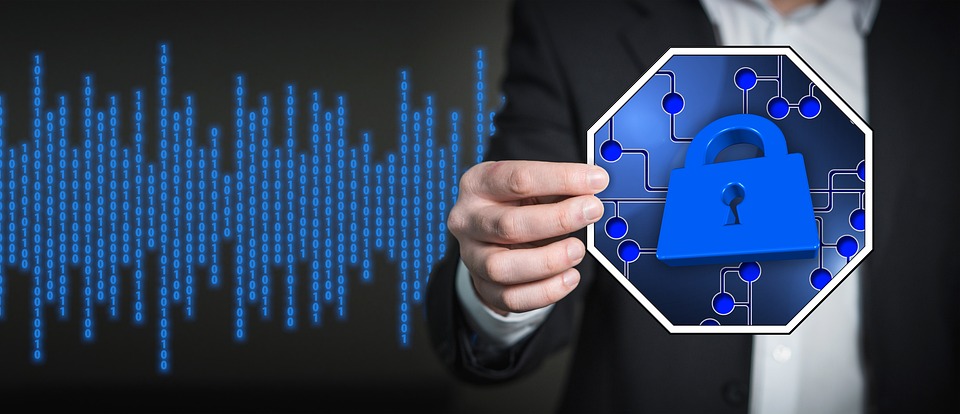The protection of data is a crucial concern for individuals, businesses, and organizations of all sizes. With the increasing reliance on technology for storing and transmitting sensitive information, the threat of data breaches and theft has become a major issue. In 2022, there were more than 2000 publicly disclosed data breaches, with 60% being a result of hacking. Affected companies and individuals were at risk of financial and reputational losses, compromised data, and sometimes legal liability.
To mitigate these risks, several methods have been developed to protect data from unauthorized access and manipulation. In this article, we will detail the top 5 methods of protecting data.
- Encryption
Encryption is a fundamental component for protecting personal data. It involves converting sensitive information into a coded form, making it unreadable to anyone without the proper decryption key. Only the authorized user, who possesses the decryption key, is able to decode and view the information. This method is widely used to protect sensitive data during transmission over the internet, as well as to secure data stored on devices, such as laptops and mobile phones. Additionally, encryption algorithms, such as AES and RSA, are used to scramble the data, making it virtually impossible for unauthorized users to access it.
With more and more organizations moving to hybrid and multicloud environments, concerns are growing about public cloud security and protecting data across complex environments. Enterprise-wide data encryption and encryption key management can help protect data on-premises and in the cloud.
Cloud service providers (CSPs) may be responsible for the security of the cloud, but customers are responsible for security in the cloud, especially the security of any data. An organization’s sensitive data must be protected, while allowing authorized users to perform their job functions. This protection should not only encrypt data, but also provide robust encryption key management, access control and audit logging capabilities.
However, encryption is not foolproof and must be implemented properly to be effective. For example, if the encryption key is lost or stolen, the encrypted data will be inaccessible, even to the legitimate owner. Additionally, encryption algorithms can be broken, particularly if they are not updated to keep up with advances in technology and attacks by malicious actors.
- Backup & Recovery
Backup and recovery describe the process of creating and storing copies of data that can be used to protect organizations against data loss. This is sometimes referred to as operational recovery. Recovery from a backup typically involves restoring the data to the original location, or to an alternate location where it can be used in place of the lost or damaged data. A proper backup copy is stored in a separate system or medium, such as t
ape, from the primary data to protect against the possibility of data loss due to primary hardware or software failure.
One of the key benefits of backup and recovery is that it allows organizations to quickly recover from data loss, minimizing downtime and reducing the risk of permanent data loss. Additionally, backup and recovery solutions can also provide an additional layer of security, as they can be used to restore data to an earlier point in time, effectively undoing any unauthorized changes or deletions.
Although beneficial, data backup and recovery are only as successful as the environment they’re placed in. Backups must be stored in a secure location, such as an off-site facility, to protect against theft, natural disasters, and other risks. Additionally, backups must be tested regularly to ensure that they can be successfully restored in the event of a disaster.
- Access Control
Access control is a method of guaranteeing that users are who they say they are and that they have the appropriate access to company data. At a high level, access control is a selective restriction of access to data. It consists of two main components: authentication and authorization, says Daniel Crowley, head of research for IBM’s X-Force Red, which focuses on data security.
One of the key benefits of access control is that it helps establish accountability within organizations by enabling
them to track and monitor who has access to what resources, and who performed which actions, reducing the risk of insider threats. Additionally, access control improves efficiency by streamlining the management of access permissions; reducing the time and resources required to manage access for large numbers of users.
Similar to all data protection methods, access control must be implemented properly in order to be effective. For example, passwords must be strong and unique, and multi-factor authentication must be used to provide an additional layer of security. Additionally, access control systems must be regularly updated and tested to ensure that they are functioning properly and protecting sensitive data from unauthorized access.
- Network Security
Network Security protects your network and data from breaches, intrusions and other threats. This is a vast and overarching term that describes hardware and software solutions as well as processes or rules and configurations relating to network use, accessibility, and overall threat protection. Network Security involves access control, virus and antivirus software, application security, network analytics, types of network-related security (endpoint, web, wireless), firewalls, VPN encryption and more.
One of the key benefits of network security is its role in confidentiality. Network security helps to ensure that
sensitive information is kept confidential, preventing unauthorized access and data breaches. It also enables organizations to meet regulatory requirements and industry compliance standards, such as HIPAA and PCI DSS. Most importantly, network security plays a huge role in risk management. It helps organizations identify and mitigate potential security risks, reducing the likelihood of security breaches and other incidents.
It’s important to note that a successful network security infrastructure requires an educated IT team. Network security systems can be complex and difficult to manage, requiring specialized knowledge and expertise to configure and maintain them effectively. Additionally, as threats evolve network security measures must be constantly updated and improved to keep pace with evolving threats and new attack methods.
Physical Security
Lastly, physical security is another important component of data protection, as it involves the measures used to secure physical devices and facilities that store sensitive information. This can include locking devices in secure
storage cabinets or vaults, implementing access control systems with biometric authentication or key cards, and installing security cameras and alarms in sensitive areas. Portable devices, such as laptops and mobile phones, are also vulnerable to theft or loss and can be protected with encryption, secure passwords, and remote wipe capabilities. A clear positive of physical security is the confidence it provides organizations. Physical security measures can give organizations confidence in the integrity and availability of their backup data, reducing the risk of data loss or corruption. Organizations can also reduce costs by protecting backup media since they avoid the cost and time associated with data recovery efforts, such as data restoration from tapes or hard drives.
However, the main drawback of physical security is the human aspect. 95% of cybersecurity data breaches are a result of human error – despite physical security measures, human error can still occur, such as misplacing backup media or leaving it unsecured. It’s important to keep track of backed-up media locations and ensure they are secure before storing them away.
Conclusion
In conclusion, data protection is a critical concern for individuals and organizations in today’s digital age and needs to be addressed at all stages of a file’s journey. A comprehensive approach to data protection that includes encryption, backup and disaster recovery planning, access control, network security, and physical security can help ensure the security and confidentiality of sensitive information. It is important to regularly assess and update security measures in order to keep up with advances in technology and the evolving threat landscape.
Share this article with your network if you think they should protect their data!
Blog by: Priyanka Rana

02
MarTop 5 Practices of Protecting Data
Mar 02, 2023Recent Blog
Vikram 3201 & Kalpana 3201Apr 04, 2025
The Open Weight Language ModelApr 03, 2025
Asia Cup 2025Apr 02, 2025
The CrocodilusApr 01, 2025
SARATHIMar 31, 2025






